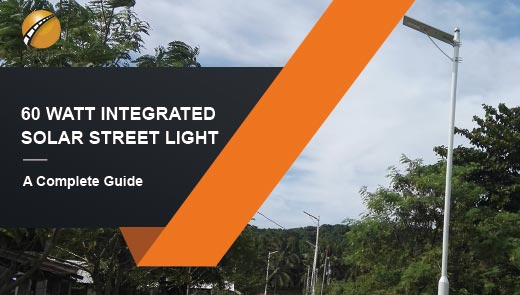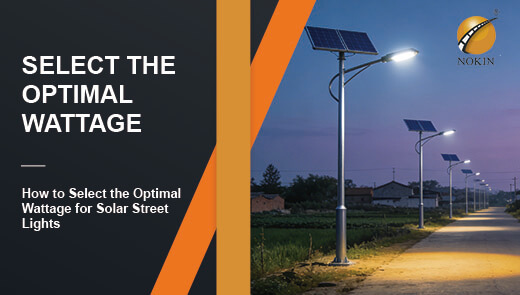Comprehensive Guide to Floodlights: Uses, Installation, and Benefits
Floodlights, lighting devices that provide a broad and intense beam, play a vital role in a wide range of applications, including outdoor venues, security and protection, and industrial and commercial applications. Understanding their definition, operating principles, core advantages, applications, installation methods, and key considerations for purchasing them will help us better utilize their capabilities, allowing this practical and versatile lighting tool to bring convenience and safety to our lives and work.
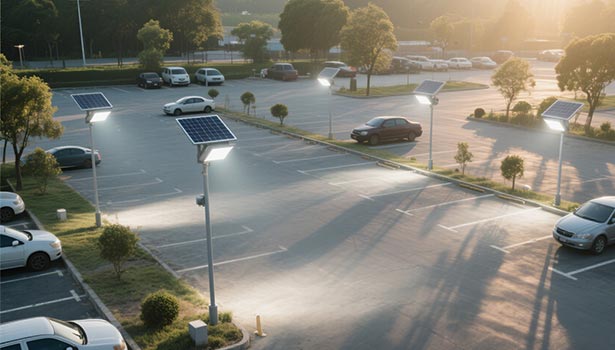
What is Floodlighting?
Floodlights are fixtures specifically designed for illuminating large areas, emitting a wide and intense beam (typically with a beam angle up to 120 degrees). Their core features include: flexible mounting positions, allowing installation on utility poles, walls, roofs, or other structures for easy adjustment of direction and angle; High-power light sources paired with specialized reflectors or lenses to focus, shape, and control light intensity. Unlike spotlights (narrow beams for highlighting specific objects) or omnidirectional lights (providing general ambient illumination), floodlights excel in “wide coverage.”
How Floodlights Work
The core operating principle of floodlights combines “light source + optical control”: First, a high-power light source—such as LED chips—provides the foundational brightness. Second, reflectors or lenses guide and shape the light, concentrating dispersed rays into a wide beam while balancing spread and intensity. Additionally, some models feature adjustable functionality, allowing users to alter beam angles and direction for enhanced flexibility.
Advantages of Floodlights
Long Life
LED floodlights significantly outlast traditional fixtures. Data from leading LED manufacturers indicates a lifespan of up to 50,000 hours—over ten times longer than filament or gas-discharge lamps. Based on 8 hours of daily use, this equates to over 17 years of continuous operation without frequent bulb replacements. This significantly reduces labor costs and consumables for maintenance, making them ideal for hard-to-reach installations like high-bay lighting in stadiums or large factories.
Controlled Heat Emission
High-power lighting equipment often converts substantial electrical energy into heat, raising ambient temperatures. This not only wastes energy but may accelerate component aging and shorten equipment lifespan. LED floodlights, utilizing semiconductor light-emitting principles, primarily convert electricity into light energy, emitting only about 30% of the heat produced by traditional halogen lamps. Some premium models incorporate active cooling systems (such as aluminum alloy heat sinks) to further maintain temperatures within safe limits, preventing fire hazards caused by overheating.
Cost-Efficient
Compared to HID or halogen lights, LED floodlights offer significant long-term cost advantages. While initial purchase costs may be slightly higher, electricity expenses can be reduced by 50%-70% over the entire life cycle. Combined with a lifespan exceeding 10 years, this minimizes bulb replacement frequency and maintenance labor costs. For large-scale venues like parking lots and factories, annual costs can decrease by over 60%, making them highly cost-effective for long-term use.
Energy Efficient
LED technology has revolutionized the commercial lighting industry and is recognized by experts as one of the most energy-efficient electrical appliances. Delivering equivalent brightness, LED floodlights consume only 1/10th the energy of traditional incandescent bulbs and 1/5th that of halogen lamps. They achieve a luminous efficacy of 80-100 lumens per watt, compared to just 10-20 lumen per watt for conventional fixtures. This high efficiency not only reduces users' electricity bills but also minimizes energy consumption and carbon emissions during power generation, aligning with global sustainability trends. It is particularly suitable for green buildings or eco-friendly projects with stringent energy consumption requirements.
Environment-Friendly
LED floodlights contain no toxic substances like lead, mercury, or carbon, and require no glass casings. Their entire life cycle—from production to disposal—is more environmentally and human-friendly. Mercury present in traditional fluorescent or HID lamps can contaminate soil and water sources if broken, whereas LED fixtures achieve over 90% material recyclability, minimizing e-waste hazards. Additionally, their glass-free design reduces breakage risks during transportation and installation while eliminating safety concerns from glass shards, making them especially suitable for households with children or pets.
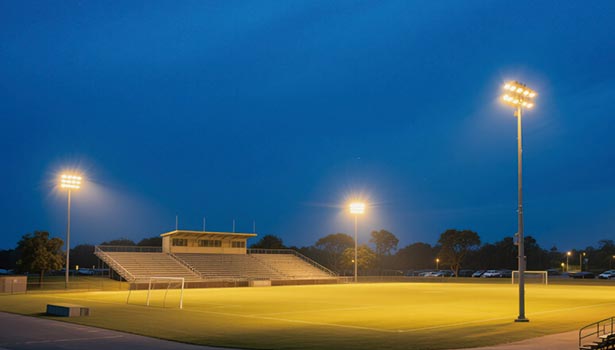
Applications of Flood Lights
Illuminate Outdoor Sports Fields (Stadium) and Events
At outdoor sports venues such as football fields, cricket grounds, and tennis courts, floodlights are essential equipment for nighttime competitions and extended training hours. Professional stadium floodlights must meet “shadow-free, glare-free” standards, with light uniformity satisfying international competition requirements (e.g., football fields require average illuminance exceeding 500 lux). Their daylight-simulating color temperature (5000-6500K) ensures athletes accurately track ball trajectories while delivering clear, natural television broadcasts. Additionally, large-scale outdoor concerts, marathons, and other nighttime events rely on floodlights for comprehensive illumination, safeguarding audience visibility and event safety.
Security and Residential Applications
For security, floodlights paired with motion sensors serve as the “first line of defense” for residential and commercial properties. When sensors detect moving objects (such as intruders), the lights instantly activate within 0.5 seconds. The intense illumination not only deters criminals but also provides clear lighting for surveillance cameras, enhancing the effectiveness of security systems. In residential settings, floodlights illuminate courtyards, driveways, or entrances to reduce tripping hazards at night. Adjusting angles and color temperatures highlights landscaping elements like plants and sculptures, enhancing the home's nighttime aesthetics and creating a warm, inviting atmosphere.
Industrial and Commercial Settings
Industrial settings like warehouses, construction sites, and docks demand high-intensity lighting. Warehouses require clear visibility for forklift operators to identify cargo labels, construction sites need illumination for elevated work platforms to prevent accidents, and docks must ensure visibility for personnel and equipment during nighttime cargo handling.
Floodlights meet these demands with their high brightness and wide coverage. Explosion-proof models are suitable for hazardous environments like chemical plants and oil/gas facilities. In commercial settings, floodlights are commonly used on mall exteriors, hotel entrances, and tourist attractions to highlight architectural outlines or signage. Warm white light (2700-3000K) creates a premium, inviting atmosphere that encourages customer engagement.
Installation Guide for Flood Lights
Proper installation is crucial for floodlights to function effectively. Below are detailed steps and precautions:
Steps for Installing Flood Lights
Safety First: Before any electrical work, always disconnect the power supply to prevent electric shock.
Select Location: Determine the installation point based on the required illumination area and purpose.
Secure Fixture: Choose wall mounts, pole mounts, or ground brackets according to the flood light type, ensuring a firm installation.
Wiring: Hardwired models require connection to the power source, strictly adhering to electrical codes. Solar or battery-powered models require no complex wiring; simply place them as per the instructions.
Test Operation: Power on after installation to verify proper function.
Positioning and Aiming for Optimal Illumination
Recommended installation angle: 45 degrees upward from ground level. This balances coverage and brightness while minimizing shadows. Adjust angles to avoid glare and light pollution, focusing on the target area.
Common Installation Options: Wall-Mounted, Ground-Mounted, Pole-Mounted
|
Installation Method |
Suitable Scenarios |
Notes |
|
Wall Mounting |
Courtyards, driveways, entrances |
Ensure sufficient height to expand coverage and reduce shadows |
|
Ground Mounting |
Landscape lighting, pathway lighting |
Fix with brackets on the ground for easy angle and position adjustment |
|
Pole Mounting |
Parking lots, sports fields, large areas |
Adjust pole height according to lighting range for even coverage |
Things to Consider When Choosing the Right Flood Light
Specific Application
Determine the intended use before purchasing: For security applications, prioritize LED flood lights with PIR motion sensors. The sensor detection range should be 8-12 meters with a response time ≤1 second to ensure prompt illumination activation. For sports venues, select LED lights with high color rendering index (Ra ≥ 80) and high brightness (2000 lumens or above), supporting dimming functionality to adapt to different event requirements. Landscape lighting can utilize low-power fixtures (30-50W) with narrow beam angles (30-60 degrees) to prevent excessive light dispersion that compromises visual impact. Simultaneously, calculate the required number based on the illuminated area. For example, a 100㎡ courtyard requires 2-3 floodlights rated at 1000 lumen each.
Lumen
Lumen serve as the core metric for measuring a luminaire's light output, with higher values indicating greater brightness. For floodlights, 700–1300 lumen are recommended, tailored to the area size:
Small areas (e.g., entrances, balconies): 700–1000 lumen provide adequate illumination without glare. For medium-to-large areas (e.g., courtyards, small parking lots), choose 1000–1300 lumen to ensure comprehensive coverage without blind spots; Large venues (e.g., soccer fields) require multiple high-power fixtures exceeding 5000 lumen. Avoid blindly pursuing high brightness to prevent light pollution and energy waste.
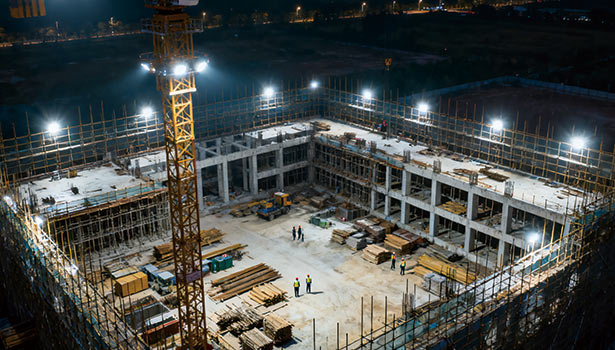
Color Temperature
Color temperature determines light's “warmth or coolness.” 2700–3000K: Warm white light with a yellowish hue, ideal for residential gardens, hotel entrances, and similar settings to create a cozy, relaxing atmosphere; 4000–5000K is neutral light, resembling natural daylight, suitable for industrial sites and parking lots where clarity is needed without glare; 5000–6500K is cool white light, offering high brightness and penetration, ideal for security and sports venues to enhance nighttime visibility. However, direct eye exposure should be avoided to prevent glare.
Protection Rating
Outdoor floodlights must prioritize IP protection ratings. The two digits following “IP” denote dust and water resistance respectively: the first digit ≥6 and the second digit ≥5, meaning a minimum IP65 rating is required to withstand outdoor conditions like rain and dust. For installation in humid areas such as pools or docks, select IP66 or IP67 ratings to prevent water ingress and short circuits. For indoor floodlights (e.g., warehouses), IP54 is acceptable, but splash resistance remains essential.
Housing Type
Prioritize tempered glass for lenses, offering 5 times the impact resistance of standard glass. It withstands wind, hail, and other external forces while maintaining over 90% light transmission for minimal light loss. The lamp body is recommended to be made of die-cast aluminum, which is lightweight, has excellent thermal conductivity, and features a corrosion-resistant surface treatment. It can operate in environments with temperature differences ranging from -30°C to 50°C without rusting or deformation, making it particularly suitable for coastal areas with high humidity.
Beam Angle and Control
The beam angle determines the illumination coverage area and should be selected based on the application:
Wide angles (90-120 degrees) are suitable for large-area lighting (e.g., parking lots, sports fields), covering more space with fewer fixtures.
Narrow angles (30-60 degrees) are ideal for focused lighting (e.g., sculptures, signage), minimizing light wastage.
Regarding control features, modern floodlights often support remote or app-based operation, enabling remote brightness adjustment and mode switching (e.g., constant on/motion sensor). This is especially convenient for installations in elevated or hard-to-reach locations. Some smart models can even integrate with security systems, enhancing user convenience.
Floodlights serve as versatile, practical lighting tools, providing reliable illumination for residential security, commercial beautification, and industrial operations. Among these, LED floodlights dominate the market due to their extended lifespan, low energy consumption, and eco-friendly advantages. Understanding floodlight applications, installation essentials, and purchasing tips empowers users to select products tailored to their needs, allowing light to enhance convenience and safety in daily life and work.

